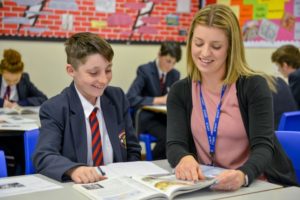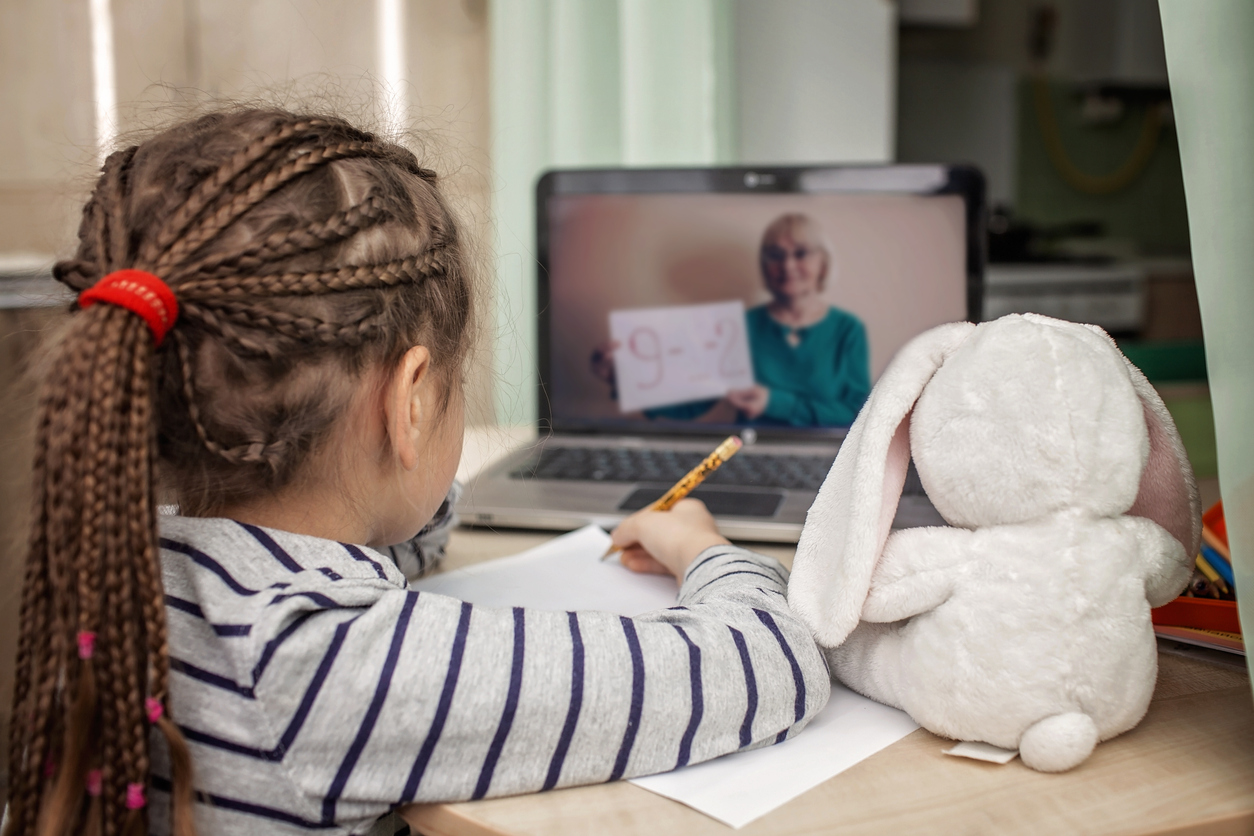We not only can, but will rebuild, better and stronger.


On the surface, the COVID pandemic is accurately labeled an incredibly difficult year for teaching and learning in schools. Albeit true, these difficulties may have also forged indelible improvements, forever changing the landscape of education as we have come to know it. The scope of the challenges associated with learning during a pandemic reach far and wide. They permeate not only classrooms but also living rooms. In an instant, and for the first time in many people’s lives, learning environments were forced to change. COVID compelled policy makers to provide emergency funds for schools; teachers to embrace technology as never before; and parents to increase their understanding of best practices in order to educate children. None of these situations are wholly negative; rather they each leave a residue of change that many hope will remain well after COVID is no longer a crisis permeating our schools.
During COVID, as students remained in the living room learning beside parents who were also forced home, traditional education roles were shifted. Educators learned to provide lessons in a variety of formats; virtually, hybrid, and face-to-face. Effective communication between school and home was re-emphasized and embraced by parents and teachers as a critical element of student success.
Educators expanded their toolbox of engagement strategies and grew to use technology in meaningful ways to deliver instruction, assess understanding, and differentiate the various needs of each scholar. Parents expanded their role as facilitator, particularly at the younger ages, and motivator for the older students. Much of that learning, for teachers and parents, will transfer into the classrooms this Fall and increase the capacity of each partner. This new awakening of possible learning environments and roles means that learning will not be lost due to inclement weather, school suspensions, family emergencies, or extracurricular activities when scholars are unable to attend school. We learned that parents can motivate and educators can facilitate in unique spaces and places. The new formats that teachers have mastered will provide an alternative to teaching when face-to-face is not an option.
The culture of teaching during COVID required a thoughtful process of teaching academic standards with a stronger purpose to identify what scholars need to know and how they will demonstrate comprehension of identified learning targets. This best practice of teaching existed prior to COVID but became essential as teachers pivoted to and from the various environments of learning during the unpredictable pandemic. Instructional leaders learned how to guide teachers through intellectual preparation of curriculum with deliberate abandonment. There is a plethora of information in each lesson of adopted curriculums. It is nearly impossible to cover it all, especially during the pandemic-induced learning situations. This necessitated that teachers dig deeper into instructional materials to get to the “nitty-gritty” of learning because teaching with a sense of urgency became paramount when virtual learning limited their time in front of scholars.
Adaptability and resilience were positive changes students experienced. They took more ownership of their learning during virtual learning and became highly skilled at navigating various Learning Management Systems (LMS). Many students, along with their parents, developed the competency of being self-aware and self-motivated due to the need of having a stronger awareness of their education responsibilities. This is another residual component of COVID one hopes remains in the altered landscape of education.
Another area of reflection each of us was forced to face was the impact from lost social-emotional support systems for students. As students’ lives were suddenly and abruptly changed, their connections were severed, literally overnight. Many students who had benefited from strong adult and peer connections at school became disconnected, and further isolated due to the pandemic. The worldwide rate of self-harm and suicide further codified our belief for investments in social-emotional staff trained to counsel and support students who may not bounce back once face-to-face school resumes. This change will be a silver lining in what was a dark time in our students’ lives. Moving forward, schools that leverage available resources may realize that serious commitments to mental health will result in long-term improvements in teaching and learning.
Never has one issue been a greater catalyst for transformative growth in education in our country than the Covid pandemic. It is time now to look at what this wildfire of change has taken from our educational landscape, and what remains. We not only can, but will rebuild, better and stronger. We will realize that some of the barriers facing us during the pandemic have now become stepping-stones for our collective regeneration of ideas, strategies, and practices for teaching and learning.
—
Nanette Merrill began her teaching career at Baker Elementary in Baker, Oregon. Nanette obtained a Master’s in Math Education and an Education Specialist Degree in Educational Leadership and Administration. After 8 years of teaching, Nanette became an administrator at Baker Elementary in 2015 and served as the Principal. In 2018, she moved to Idaho and became the founding principal for Gem Prep Meridian and is currently the founding principal for the second Gem Prep Meridian school, Gem Prep Meridian North. Nanette was recognized as the 2013 Oregon Teacher of the Year and continues to provide her leadership and educational insights at the local, state, and national levels.